 E-learning templates are great. They speed up production and deliver a professional and polished look. And there are lots of e-learning templates from which to choose. Articulate 360 offers slides and interaction templates for both Storyline 360 and Studio 360 in PowerPoint.
With all that said, there are some challenges with templates and issues I run into when delivering the e-learning workshops.
E-learning templates are great. They speed up production and deliver a professional and polished look. And there are lots of e-learning templates from which to choose. Articulate 360 offers slides and interaction templates for both Storyline 360 and Studio 360 in PowerPoint.
With all that said, there are some challenges with templates and issues I run into when delivering the e-learning workshops.
- Mix & match templates. The course author wants to mix and match templates. Generally, this is easy enough to do. For the most part it's a
...
Read the full article
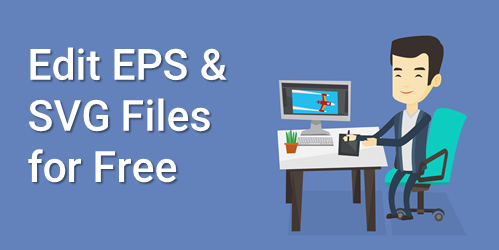 There are a lot of free graphics files available online. Many of the free graphics are illustrations that are .EPS or .SVG files. The challenge is editing those files to suit your own needs.
If you already own a graphics program, then you can edit the files with no problems. If you don't, then you have to look for other options.
Photopea is a free app where you can edit graphics files online. It's fairly easy-to-use and includes a standard graphic's editing user interface. I've included ...
There are a lot of free graphics files available online. Many of the free graphics are illustrations that are .EPS or .SVG files. The challenge is editing those files to suit your own needs.
If you already own a graphics program, then you can edit the files with no problems. If you don't, then you have to look for other options.
Photopea is a free app where you can edit graphics files online. It's fairly easy-to-use and includes a standard graphic's editing user interface. I've included ...
Read the full article
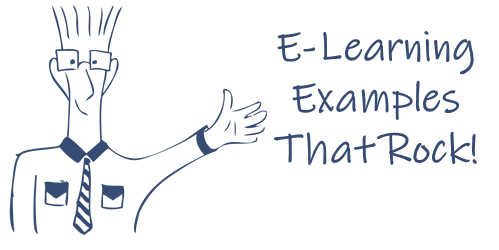 Many of you know I'm a big fan of the e-learning challenges posted each week in the community. The intent is to get you to think about different ways to see the tools, be inspired by other examples, and practice using the software to learn new production tips.
I am always impressed with the diverse ideas that are demonstrated each week by both experienced and novice developers. On occasion I like to feature specific participants because they do really nice work and offer some creative ideas.
Today, I'd ...
Many of you know I'm a big fan of the e-learning challenges posted each week in the community. The intent is to get you to think about different ways to see the tools, be inspired by other examples, and practice using the software to learn new production tips.
I am always impressed with the diverse ideas that are demonstrated each week by both experienced and novice developers. On occasion I like to feature specific participants because they do really nice work and offer some creative ideas.
Today, I'd ...
Read the full article
 We all want to give proper credit to our sources when presenting content. Many of us learned to cite our sources when writing reports for school work or research papers. But does it work the same way for an e-learning course?
I had a great question from a blog reader last week:
I am a relatively new instructional designer, but I was an English teacher for nearly 20 years. When I started my new job, I found that other designers and trainers in my company were just quoting and copying ...
We all want to give proper credit to our sources when presenting content. Many of us learned to cite our sources when writing reports for school work or research papers. But does it work the same way for an e-learning course?
I had a great question from a blog reader last week:
I am a relatively new instructional designer, but I was an English teacher for nearly 20 years. When I started my new job, I found that other designers and trainers in my company were just quoting and copying ...
Read the full article
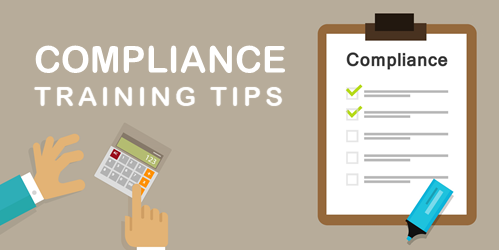 In a recent survey, 68% of e-learning developers told us that they build compliance training. In fact, it's the majority of what people build. Compliance training is a bit tricky because e-learning contains the word learning, but often compliance training doesn't really have a real connection to learning. If we're honest, a lot of it is a big information dump with little real connection to the learner's day-to-day activities.
For example, you don't hire a bunch of unethical people and then figure it'll all work out after they complete their ...
In a recent survey, 68% of e-learning developers told us that they build compliance training. In fact, it's the majority of what people build. Compliance training is a bit tricky because e-learning contains the word learning, but often compliance training doesn't really have a real connection to learning. If we're honest, a lot of it is a big information dump with little real connection to the learner's day-to-day activities.
For example, you don't hire a bunch of unethical people and then figure it'll all work out after they complete their ...
Read the full article
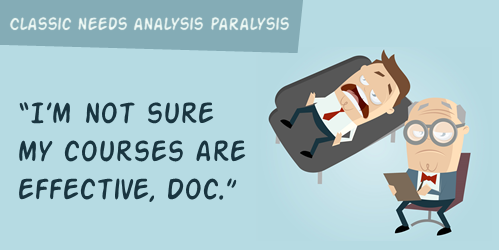 We’ve all heard about analysis paralysis where we spend a lot of time collecting data and then worry so much about how to interpret it (or building the right course) that we never get anything done.
I’ve worked on plenty of training projects where that was the case. It was frustrating for the customers, as well as the training team.
Here are a few ideas to help in the analysis and getting things done at the speed of business.
Focus on Relevant Content
Training exists for a purpose. It’s a solution for something. Be ...
We’ve all heard about analysis paralysis where we spend a lot of time collecting data and then worry so much about how to interpret it (or building the right course) that we never get anything done.
I’ve worked on plenty of training projects where that was the case. It was frustrating for the customers, as well as the training team.
Here are a few ideas to help in the analysis and getting things done at the speed of business.
Focus on Relevant Content
Training exists for a purpose. It’s a solution for something. Be ...
Read the full article
 Every two years I take my car in and have the emissions tested. The goal of the test is to certify that my car meets specific emissions standards. If the car passes, I am certified and I can move on. However, if it doesn't pass, then my car has to go under a different series of tests (and perhaps repairs) to get up to the appropriate standard and certified. Of course, this takes more time.
As I was waiting in my car, I was reminded that ...
Every two years I take my car in and have the emissions tested. The goal of the test is to certify that my car meets specific emissions standards. If the car passes, I am certified and I can move on. However, if it doesn't pass, then my car has to go under a different series of tests (and perhaps repairs) to get up to the appropriate standard and certified. Of course, this takes more time.
As I was waiting in my car, I was reminded that ...
Read the full article
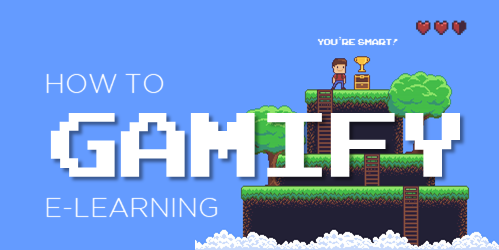 Many of us are challenged to convert our linear content into something more interactive and engaging. I was digging through some old workshop files and stumbled upon one I built a while back but never ended up sharing it outside of the workshop. In the workshop activity, the objective was to not build completely from scratch. We started with an existing template that was shared in the community, and then we explored a few ways we could add some gamified elements to create something that is a bit ...
Many of us are challenged to convert our linear content into something more interactive and engaging. I was digging through some old workshop files and stumbled upon one I built a while back but never ended up sharing it outside of the workshop. In the workshop activity, the objective was to not build completely from scratch. We started with an existing template that was shared in the community, and then we explored a few ways we could add some gamified elements to create something that is a bit ...
Read the full article
 I'm asked to review courses all the time and one of the most frustrating things is to go through the course and find the developer has locked every slide. This requires that I have to click through every screen, interaction, and quiz before I can get to specific places for review.
For those asking for feedback in the community, it's extra frustrating trying to troubleshoot a course and having to click through everything to get to a specific place in it.
An easy solution is to create a secret menu that ...
I'm asked to review courses all the time and one of the most frustrating things is to go through the course and find the developer has locked every slide. This requires that I have to click through every screen, interaction, and quiz before I can get to specific places for review.
For those asking for feedback in the community, it's extra frustrating trying to troubleshoot a course and having to click through everything to get to a specific place in it.
An easy solution is to create a secret menu that ...
Read the full article
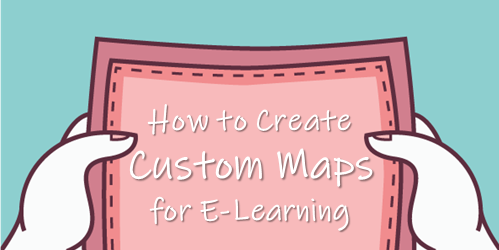 Here's an issue I run into quite a bit: I need a map for my e-learning courses; but I don't need a detailed map.
Stock image sites are fine for generic illustrated maps but they're usually too generic. The other option is to do a screen grab of an online map, but then that's often too detailed.
Recently, I was working on a map demo where I needed a specific map, but I didn't want a real map screen shot because it was too busy and I knew ...
Here's an issue I run into quite a bit: I need a map for my e-learning courses; but I don't need a detailed map.
Stock image sites are fine for generic illustrated maps but they're usually too generic. The other option is to do a screen grab of an online map, but then that's often too detailed.
Recently, I was working on a map demo where I needed a specific map, but I didn't want a real map screen shot because it was too busy and I knew ...
Read the full article
 It costs money to build e-learning courses and it costs money to take e-learning courses. Considering the cost, it's important to ensure that you get the most value out of the courses you create.
One way to get value is to not create a course. Seriously. We don't want to admit it, but many courses are pointless and a waste of time.
However, if you do need to create e-learning courses, then consider the following points below:
Create a Resource Hierarchy
You have limited resources and ...
It costs money to build e-learning courses and it costs money to take e-learning courses. Considering the cost, it's important to ensure that you get the most value out of the courses you create.
One way to get value is to not create a course. Seriously. We don't want to admit it, but many courses are pointless and a waste of time.
However, if you do need to create e-learning courses, then consider the following points below:
Create a Resource Hierarchy
You have limited resources and ...
Read the full article
 It’s easy to make a list of things one needs to know and create courses focused on that information. That's why we have a lot of click and read content.
However, knowing information and understanding the information are two different things.
Most e-learning is designed to present information through a series of screens. Then the course ends with a simple quiz to confirm a rote understanding of the content. However, a good course develops understanding rather than merely present information.
Here are 4 ways to move past information ...
It’s easy to make a list of things one needs to know and create courses focused on that information. That's why we have a lot of click and read content.
However, knowing information and understanding the information are two different things.
Most e-learning is designed to present information through a series of screens. Then the course ends with a simple quiz to confirm a rote understanding of the content. However, a good course develops understanding rather than merely present information.
Here are 4 ways to move past information ...
Read the full article
 E-learning templates are great. They speed up production and deliver a professional and polished look. And there are lots of e-learning templates from which to choose. Articulate 360 offers slides and interaction templates for both Storyline 360 and Studio 360 in PowerPoint.
With all that said, there are some challenges with templates and issues I run into when delivering the e-learning workshops.
E-learning templates are great. They speed up production and deliver a professional and polished look. And there are lots of e-learning templates from which to choose. Articulate 360 offers slides and interaction templates for both Storyline 360 and Studio 360 in PowerPoint.
With all that said, there are some challenges with templates and issues I run into when delivering the e-learning workshops.
 There are a lot of free graphics files available online. Many of the
There are a lot of free graphics files available online. Many of the  Many of you know I'm a big fan of the
Many of you know I'm a big fan of the  We all want to give proper credit to our sources when presenting content. Many of us learned to cite our sources when writing reports for school work or research papers. But does it work the same way for an e-learning course?
I had a great question from a blog reader last week:
I am a relatively new instructional designer, but I was an English teacher for nearly 20 years. When I started my new job, I found that other designers and trainers in my company were just quoting and copying ...
We all want to give proper credit to our sources when presenting content. Many of us learned to cite our sources when writing reports for school work or research papers. But does it work the same way for an e-learning course?
I had a great question from a blog reader last week:
I am a relatively new instructional designer, but I was an English teacher for nearly 20 years. When I started my new job, I found that other designers and trainers in my company were just quoting and copying ...
 In a recent survey, 68% of e-learning developers told us that they build compliance training. In fact, it's the majority of what people build. Compliance training is a bit tricky because e-learning contains the word learning, but often compliance training doesn't really have a real connection to learning. If we're honest, a lot of it is a big information dump with little real connection to the learner's day-to-day activities.
For example, you don't hire a bunch of unethical people and then figure it'll all work out after they complete their ...
In a recent survey, 68% of e-learning developers told us that they build compliance training. In fact, it's the majority of what people build. Compliance training is a bit tricky because e-learning contains the word learning, but often compliance training doesn't really have a real connection to learning. If we're honest, a lot of it is a big information dump with little real connection to the learner's day-to-day activities.
For example, you don't hire a bunch of unethical people and then figure it'll all work out after they complete their ...
 We’ve all heard about analysis paralysis where we spend a lot of time collecting data and then worry so much about how to interpret it (or building the right course) that we never get anything done.
I’ve worked on plenty of training projects where that was the case. It was frustrating for the customers, as well as the training team.
Here are a few ideas to help in the analysis and getting things done at the speed of business.
Focus on Relevant Content
Training exists for a purpose. It’s a solution for something. Be ...
We’ve all heard about analysis paralysis where we spend a lot of time collecting data and then worry so much about how to interpret it (or building the right course) that we never get anything done.
I’ve worked on plenty of training projects where that was the case. It was frustrating for the customers, as well as the training team.
Here are a few ideas to help in the analysis and getting things done at the speed of business.
Focus on Relevant Content
Training exists for a purpose. It’s a solution for something. Be ...
 Every two years I take my car in and have the emissions tested. The goal of the test is to certify that my car meets specific emissions standards. If the car passes, I am certified and I can move on. However, if it doesn't pass, then my car has to go under a different series of tests (and perhaps repairs) to get up to the appropriate standard and certified. Of course, this takes more time.
As I was waiting in my car, I was reminded that ...
Every two years I take my car in and have the emissions tested. The goal of the test is to certify that my car meets specific emissions standards. If the car passes, I am certified and I can move on. However, if it doesn't pass, then my car has to go under a different series of tests (and perhaps repairs) to get up to the appropriate standard and certified. Of course, this takes more time.
As I was waiting in my car, I was reminded that ...
 Many of us are challenged to convert our linear content into something more interactive and engaging. I was digging through some old workshop files and stumbled upon one I built a while back but never ended up sharing it outside of the workshop. In the workshop activity, the objective was to not build completely from scratch. We started with an existing template that was shared in the community, and then we explored a few ways we could add some gamified elements to create something that is a bit ...
Many of us are challenged to convert our linear content into something more interactive and engaging. I was digging through some old workshop files and stumbled upon one I built a while back but never ended up sharing it outside of the workshop. In the workshop activity, the objective was to not build completely from scratch. We started with an existing template that was shared in the community, and then we explored a few ways we could add some gamified elements to create something that is a bit ...
 I'm asked to review courses all the time and one of the most frustrating things is to go through the course and find the developer has locked every slide. This requires that I have to click through every screen, interaction, and quiz before I can get to specific places for review.
For those asking for feedback in the community, it's extra frustrating trying to troubleshoot a course and having to click through everything to get to a specific place in it.
An easy solution is to create a secret menu that ...
I'm asked to review courses all the time and one of the most frustrating things is to go through the course and find the developer has locked every slide. This requires that I have to click through every screen, interaction, and quiz before I can get to specific places for review.
For those asking for feedback in the community, it's extra frustrating trying to troubleshoot a course and having to click through everything to get to a specific place in it.
An easy solution is to create a secret menu that ...
 Here's an issue I run into quite a bit: I need a map for my e-learning courses; but I don't need a detailed map.
Stock image sites are fine for generic illustrated maps but they're usually too generic. The other option is to do a screen grab of an online map, but then that's often too detailed.
Recently, I was working on a map demo where I needed a specific map, but I didn't want a real map screen shot because it was too busy and I knew ...
Here's an issue I run into quite a bit: I need a map for my e-learning courses; but I don't need a detailed map.
Stock image sites are fine for generic illustrated maps but they're usually too generic. The other option is to do a screen grab of an online map, but then that's often too detailed.
Recently, I was working on a map demo where I needed a specific map, but I didn't want a real map screen shot because it was too busy and I knew ...
 It costs money to build e-learning courses and it costs money to take e-learning courses. Considering the cost, it's important to ensure that you get the most value out of the courses you create.
One way to get value is to not create a course. Seriously. We don't want to admit it, but many courses are pointless and a waste of time.
However, if you do need to create e-learning courses, then consider the following points below:
Create a Resource Hierarchy
You have limited resources and ...
It costs money to build e-learning courses and it costs money to take e-learning courses. Considering the cost, it's important to ensure that you get the most value out of the courses you create.
One way to get value is to not create a course. Seriously. We don't want to admit it, but many courses are pointless and a waste of time.
However, if you do need to create e-learning courses, then consider the following points below:
Create a Resource Hierarchy
You have limited resources and ...
 It’s easy to make a list of things one needs to know and create courses focused on that information. That's why we have a lot of click and read content.
However, knowing information and understanding the information are two different things.
Most e-learning is designed to present information through a series of screens. Then the course ends with a simple quiz to confirm a rote understanding of the content. However, a good course develops understanding rather than merely present information.
Here are 4 ways to move past information ...
It’s easy to make a list of things one needs to know and create courses focused on that information. That's why we have a lot of click and read content.
However, knowing information and understanding the information are two different things.
Most e-learning is designed to present information through a series of screens. Then the course ends with a simple quiz to confirm a rote understanding of the content. However, a good course develops understanding rather than merely present information.
Here are 4 ways to move past information ...
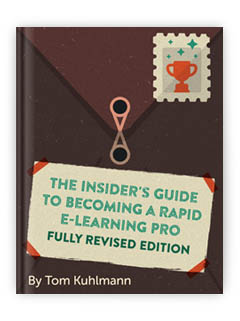


0
comments